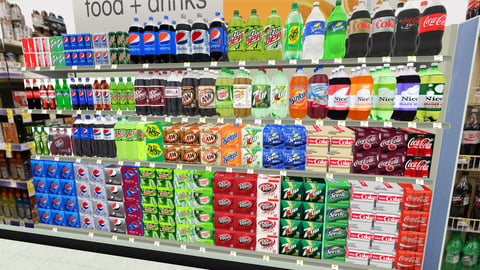Symphony RetailAI, InContext Team to Advance Retail Landscape
Symphony RetailAI, a provider of AI-enabled revenue growth management solutions and customer-centric insights for retailers and CPGs, is teaming up with InContext Solutions, a provider of 3D simulation software and virtual shopping insights for retail.
The partnership supports Symphony RetailAI’s agile merchandising initiative and allows retailers to identify, design and test category and store layouts in an AI-enabled virtual environment. It also has proven to significantly reduce the time and expenses traditionally associated with these processes, while increasing the accuracy and customer value.
Working with InContext is a logical outgrowth of Symphony RetailAI’s focus on enabling retailers to respond to today’s need for constant agility in the marketplace. Retailers require the ability to examine granular trends and market influences, localize assortments and respond quickly to these pressures.
Traditional methods of physically evaluating and setting up macro- and micro- layouts for stores are becoming liabilities that impede responsiveness to customer demand for new experiences in-store.
Symphony RetailAI’s space planning solutions are enhanced through the advanced VR technology of InContext Solutions’ ShopperMX platform, enabling retailers to streamline the space planning process and drive more effective use of physical store real estate. The resulting outcome is 5-10% improvement in category performance.
The most significant improvements to traditional store planning processes include:
- Accuracy – AI-enabled shelf scores provide a highly optimized cluster or store specific assortment and arrangement that has been validated by shoppers.
- Cost – Digital prototyping is much more cost effective than physical sets and traditional shopper testing, all planning activities happen in a virtual environment that can be built, reconstructed and manipulated at any time - substantially reducing costs.
- Speed – Real-time predictive analytics and shopper validation reduce the time and cost of traditional research or in market testing.
“Historically, retailers have found investment in store-layout optimization to be prohibitively expensive,” said Pallab Chatterjee, Symphony RetailAI CEO. “However, by virtualizing the process of category- and store-planogram design and testing, Symphony RetailAI and InContext Solutions are able to help retailers create agile store layouts that keep pace with rapidly changing market conditions. In addition to saving time and money building new store environments, retailers see instant and measurable impact through improved category growth and customer outcomes, visualized by easy-to-use overlay analytics on performance.”
Through this partnership, optimized planograms developed using Symphony RetailAI Store Planning and Optimization are integrated with InContext Solutions’ ShopperMX 3D Content & Curation platform to make multi-user virtual reality testing possible. By creating a unified feedback loop between the AI-enabled planning solution and VR testing process, users can refine the planogram before updates are made to physical stores – increasing speed and reducing costs.
Machine learning is used to optimize trade promotion spend and model new layouts with virtual simulation testing, said David Rich, InContext Solutions executive chairman and CEO. This scenario presents efficiency and confidence for retailers when it comes to incremental resets or significant format redesigns that impact category and store profit, Rich said.





